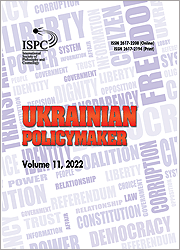Populism Versus a Transparently Informed Public: the State of the Media Space in South East Europe
Populism Versus a Transparently Informed Public: the State of the Media Space in South East Europe
Author(s): Katerina Veljanovska BlazhevskaSubject(s): Media studies, Governance, Politics and communication, Corruption - Transparency - Anti-Corruption
Published by: Международное философско-космологическое общество
Keywords: media; transparency; public opinion; populism; informing;
Summary/Abstract: The government creates public policy for the most part, but it is far from monopolization. The set of policies and the best ways to implement them is a commitment of the entire state administration, but it all depends on the acceptance by the public and the proclaimed public opinion in accordance with the specific policies. Within this paper, the role of the media in creating a transparently informed public is highlighted, in order to prevent negative populism. The real situation of the media in South East Europe stands out as an area for analysis. The media and journalists are responsible for being transparent and with a set system of democratic values. In the region of South East Europe, the media and journalists need to work in mutual coordination and strengthen their protection. Media are the main corrector of the ethics and credibility of the government policies. What is important to be highlighted is that there is a need for strong cooperation between media and government. In fact, cooperation is key to strengthening democratic processes. All this is particularly important, in order to keep professional journalism and professional media reporting alive. The purpose of this paper is, through a description of the phenomenon of populism, to highlight that the link between public opinion, the media and public policies (government policies) is the main key for having a properly informed public. Regarding the methodological framework, the method of content analysis, the method of comparison and the method of generalization and specification were used in the analysis.
Journal: Ukrainian Policymaker
- Issue Year: 11/2022
- Issue No: 11
- Page Range: 92-102
- Page Count: 11
- Language: English

